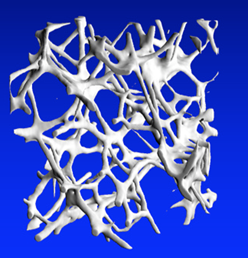Our bones are complex living tissue comprised of a thick outer shell (known as the cortex) and a strong inner honeycomb mesh of tiny cross-members (known as the trabeculae). This structure enables our bones to be strong, lightweight and somewhat flexible. These properties are important because they allow our skeletons to support us while being able to cope with the stresses and strains that we impose upon them in the course of day-to-day life.
During the first two decades of life our skeleton grows, reaching what is termed Peak Bone Mass – the point when our bones are at their most dense – in our early 20s. In the middle period of life, a continual process of repair is ongoing which ensures that old worn-out bone is replaced by fresh new bone.
In later life – or when specific medical conditions occur in people in their middle years – the balance between old bone being broken down (known as resorption) and new bone being made (known as formation) can be lost. When there is more resorption than formation, the total amount of bone in the skeleton begins to decline and bones become more fragile. This is particularly common for women who have experienced the menopause, because oestrogen plays an important role in maintaining the balancing act of this process known as bone remodelling. For significant numbers of men it should be noted that, after 70 years of age, loss of bone density is also an issue.
When a person’s bone density drops below a specific level a diagnosis of osteoporosis will be made.
 |
 |
Reproduced with kind permission of the University of Auckland Bone and Joint Laboratory





 Print
Print